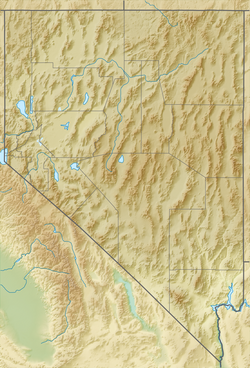| Dry Lake Range | |
|---|---|
| Highest point | |
| Elevation | 938 m (3,077 ft) |
| Geography | |
| Country | United States |
| State | Nevada |
| District | Clark County |
| Range coordinates | 36°25′3.896″N114°50′16.996″W / 36.41774889°N 114.83805444°W |
| Topo map | USGS Dry Lake |
The Dry Lake Range is a mountain range in Clark County, Nevada. [1]
